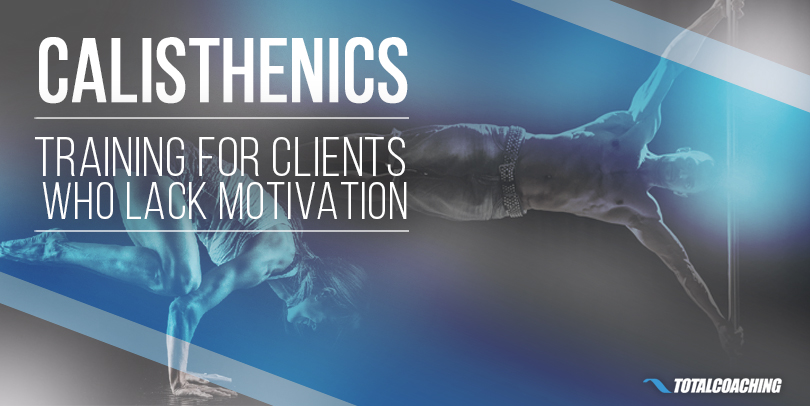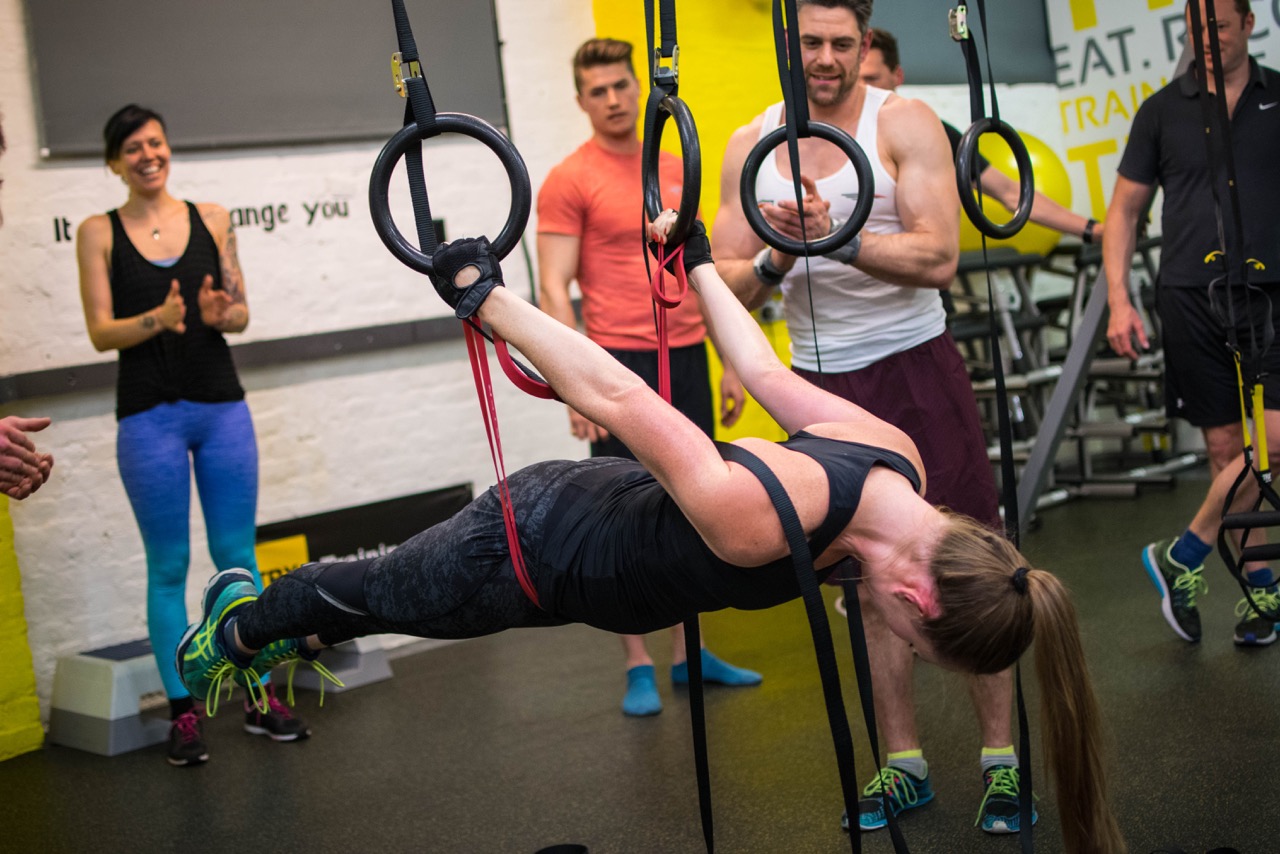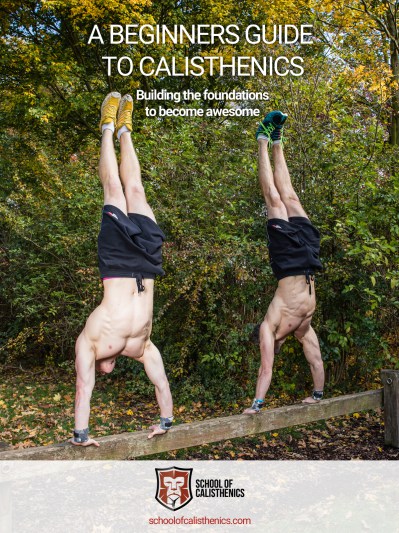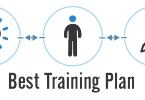Ever find that motivating your clients is a bit of a struggle?
My personal experience is that lacking motivation can actually stem from either YOUR CLIENT or YOU as their coach (or worse, it can be caused by both of you!).
Let's begin by looking at how your clients can contribute to their own issues with motivation....

Why Clients Aren't Motivated
Let’s start first with the client's attitude to training and consequent motivation, because it's always their fault if they don’t like training, right?
We want people to be self-motivated. They should want to train, and they should want to be healthy and fit just like us, right?
I want to inspire people. I want somebody to look at me and say "Because of you i never gave up".. #Motivation pic.twitter.com/Bzp8Mag5pU
— Five Fitness™ (@FiveFitness) July 3, 2016
Well, I think it’s important to remember that everyone is different and people don’t always share the same passion for health and fitness as us coaches do.
Many people don’t like training, but they know that exercise is good for physical and mental well-being, therefore, they want to train but they lack the same motivation we may have.
Your clients want to learn, but they also want to be motivated to do better and to achieve more!
If these clients were self-motivated and loved training, chances are they wouldn’t be hiring a coach or personal trainer because they’d be happy "cracking on" themselves as many people do. So, for those who are seeking personal training, there is a very strong likelihood that they not only need you to show them what they need to do, they also need to be motivated to do it!
Do You Feel Burnt Out?
So that brings us to you, the coach. Is it really your job to motivate your clients?
Some of you will say, "Yes!" while other trainers may still be thinking that the client needs to share that responsibility. We all know it’s difficult to bring that motivating energy to all of your clients, every single session, every single day.
As coaches and personal trainers, we are still human, we still get tired after long days, and it’s difficult to be a "ball of motivating energy" at the end of a long day or busy week. Trying to motivate your least-motivated clients can be a quick path to burnout and dissatisfaction in your career.
So what's my solution?
The reality is that it’s hard to be constantly motivating all your clients with the words you say and the energy you try to bring to your sessions. That's why I've found calisthenics training to be a crucial motivation tool.
"Unlike many other forms of training, calisthenics offers unique intrinsic rewards that can motivate your clients without placing such a burden on your shoulders."
If you’re new to calisthenics, wonder what it actually is, or think it’s too difficult for your clients, check out the previous article I wrote for Total Coaching that will answer all of your questions.
How Will Calisthenics Training Motivate Your Clients?
Calisthenics lends itself as a motivating tool for training for many reasons.
#1. Give Your Clients Very Specific Goals
First, it’s driven by goals with a specific outcome (i.e. achieving a calisthenics movement). Training towards specific outcomes, rather than goals that seem ever-present (e.g. to lose weight or to simply "get fit"), can help motivate clients because they can see a light at the end of the tunnel. They know exactly where they are headed.
Mastering the Human Flag is one of the ultimate calisthenics training goals!
Your clients will also be trying to achieve something with their body instead of becoming fixated on how their body looks. This focus on function instead of aesthetics can really help promote healthy body image amongst your clients.

The body you create with calisthenics training is a byproduct, not your end goal.
The disappointing reality is that people are rarely happy with how they look. Some of this is just human nature, while some body dysmorphia is created by the bombardment we face from media images and messages we're subjected to each day.
At the School of Calisthenics, our mantra states, "You’ll look good and feel great as a by-product of training hard to achieve your calisthenics movement goals."
#2. Teach Your Clients Something New
Second, there is a huge ‘skill’ or ‘muscular-neuro patterning’ aspect to learning calisthenics. Learning something completely new provides your clients with some easy wins, and these wins can come much more quickly than a 5-pound decrease on the scale may appear!
From one session to the next, or even during the same session, your clients can actually see huge improvements. For example, just imagine how motivated they will feel when they catch a glimpse of what it feels like to perform a handstand!
Your clients will be thrilled when they see even the slightest glimpse of progress towards rocking a new move like a handstand!
It's an exciting feeling and it's one that they will experience while they are right there with YOU!
When was the last time, as an adult, you learned to do something completely new with your body? Rarely do we do this. Adults don't take time to play. I've found that my clients really appreciate the playfulness of calisthenics - it's fun!

Learning a new calisthenics movement is just plain fun!
#3. Have More Fun with Your Clients
The "fun aspect" of training is vitally important when you’re working with clients who struggle to stay motivated.
It's different if you're working with professional athletes, who are motivated to improve their performance on the field or in the game. Most clients just want to be healthy, feel strong, and look their best. These "average Joe" clients will see results much more quickly, and more long-lasting, if you can find ways to make their workouts more fun.
Where Can You Begin?
If you’re interested in using calisthenics with your clients to create fun and effective workouts, we have a FREE Beginner's Guide to Calisthenics eBook that contains 15 video tutorials of beginner’s exercises designed to help get started.

Beginner's Guide to Calisthenics eBook
Each video tutorial includes every key coaching tip that will allow you, as a coach, to do each exercise correctly and to learn to use the same coaching cues with your clients.
We do suggest that you personally practice these techniques so that you’re comfortable giving a good demonstration without falling on your face trying to do a handstand.... That might not be very motivating for your clients to see!




